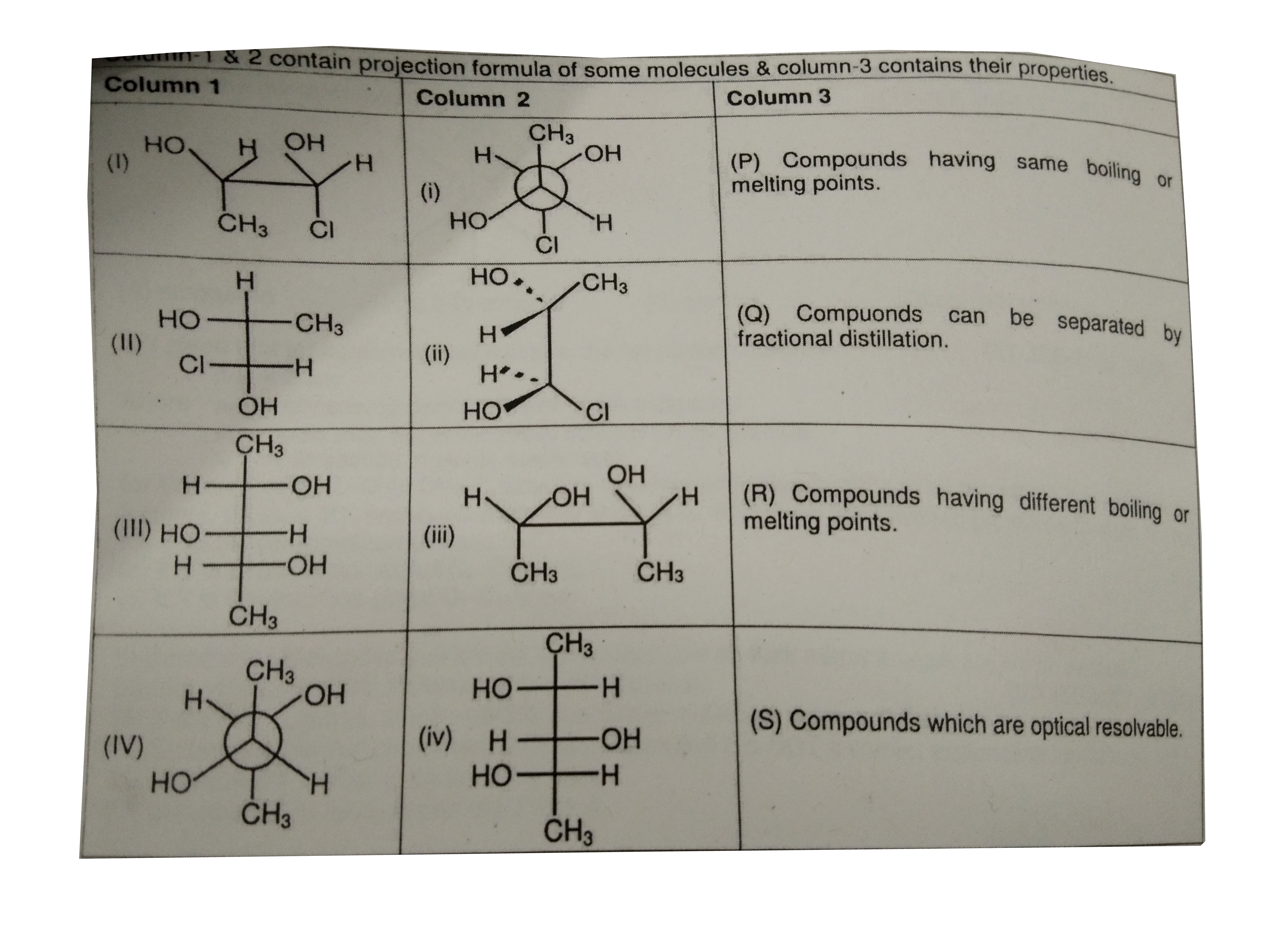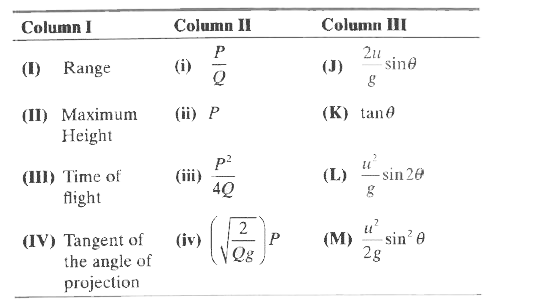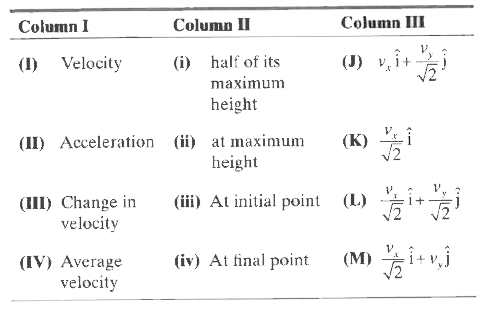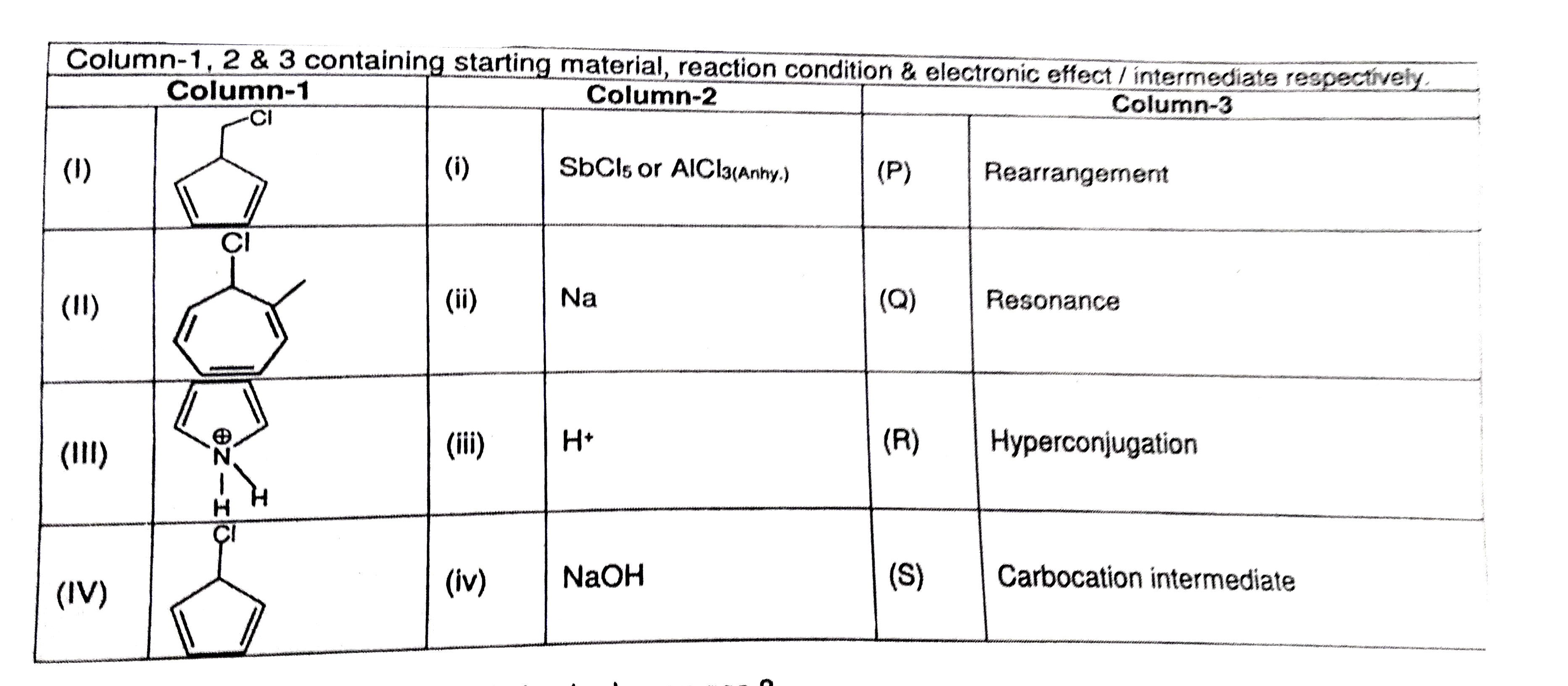appropriately matching the information given in the three columns of the following table.

Which of the following combination gives correct information.
(I) (ii) (Q)
(II) (iii) (P)
(III) (iv) (P)
(IV) (iii) (P)
The correct Answer is:A, C
Topper's Solved these Questions
- STEREOISOMERISMBOOK - RESONANCECHAPTER - STEREOISOMERISMEXERCISE - EXERCISE (PART -1 JEE (ADVANCED))
17 Videos
- STEREOISOMERISMBOOK - RESONANCECHAPTER - STEREOISOMERISMEXERCISE - EXERCISE (PART -II JEE (MAIN))
16 Videos
- STEREOISOMERISMBOOK - RESONANCECHAPTER - STEREOISOMERISMEXERCISE - EXERCISE (PART III : ONE OR MORE THAN ONE OPTIONS CORRECT TYPE)
14 Videos
- SOLUTIONSBOOK - RESONANCECHAPTER - SOLUTIONSEXERCISE - Advabced Level Problems (PART-2)
35 Videos
- STRUCTURAL IDENTIFICATIONBOOK - RESONANCECHAPTER - STRUCTURAL IDENTIFICATIONEXERCISE - Advanced level Problems (Part-III)
12 Videos
Similar Questions
Answer question 1,2 & 3 by appropriately matching the information given in the three columns of the following table .

Which of the following combination is incorrect ?
View SolutionAnswer question 1,2 & 3 by appropriately matching the information given in the three columns of the following table .

Which of the following combination is incorrect ?
View Solution
Knowledge Check
In each question, there is a table having 3 columns and 4 rows. Based on the table, there are 3 questions. Each question has 4 options (a), (b), ( c) and (d), ONLY ONE of these four options is correct.
The particle is projected in projectile motion with velocity u at an angle θ with horizontal is represented by y=Px−Qx2. Answer the questions by appropriately matching the information given in the three columns of the following table.

Which of the following combination shows the correct relation of quantities when total displacement of the particle is zero?A(I) (i) (M)B(III) (iv) (J)C(I) (iii) (L)D(IV) (ii) (K)In each question, there is a table having 3 columns and 4 rows. Based on the table, there are 3 questions. Each question has 4 options (a), (b), ( c) and (d), ONLY ONE of these four options is correct.
A ball is projected from the ground with velocity v such that its range is maximum. Answer the questions by appropriately matching the information given in the three columns of the following table.

Which of the following is the correct columns match ?A(IV) (iii) (K)B(II) (iv) (L)C(III) (ii) (M)D(I) (i) (J)Answer 12, 13 and 14 by appropriately matching the information given in the three columns of the following table.

In which amongs the following aromatic product will not form?A(I)(i)(P)B(II)(i)(Q)C(III)(iv)(Q)D(IV)(ii)(Q)
Answer question 1,2 & 3 by appropriately matching the information given in the three columns of the following table .

Which of the following is correct for AB3 salt ?
View SolutionAnswer question 1,2 & 3 by appropriately matching the information given in the three columns of the following table .

Which of the following is correct for AB3 salt ?
View Solution1, 2 and 3 by appropriately matching the information given in the three columns of the following table.

The CORRECT combination is:
View Solution1, 2 and 3 by appropriately matching the information given in the three columns of the following table.

The CORRECT combination is:
View Solution1, 2 and 3 by appropriately matching the information given in the three columns of the following table.

The CORRECT combination is:
View Solution
